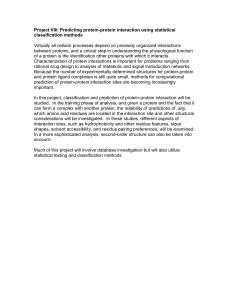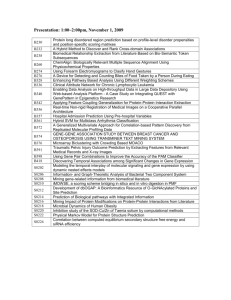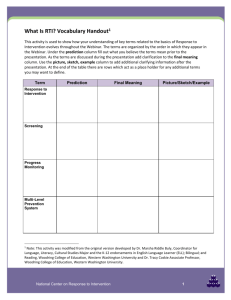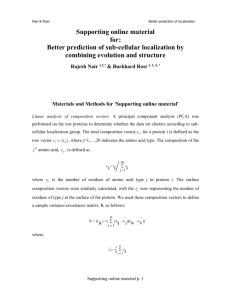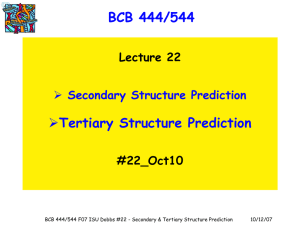BCB 569
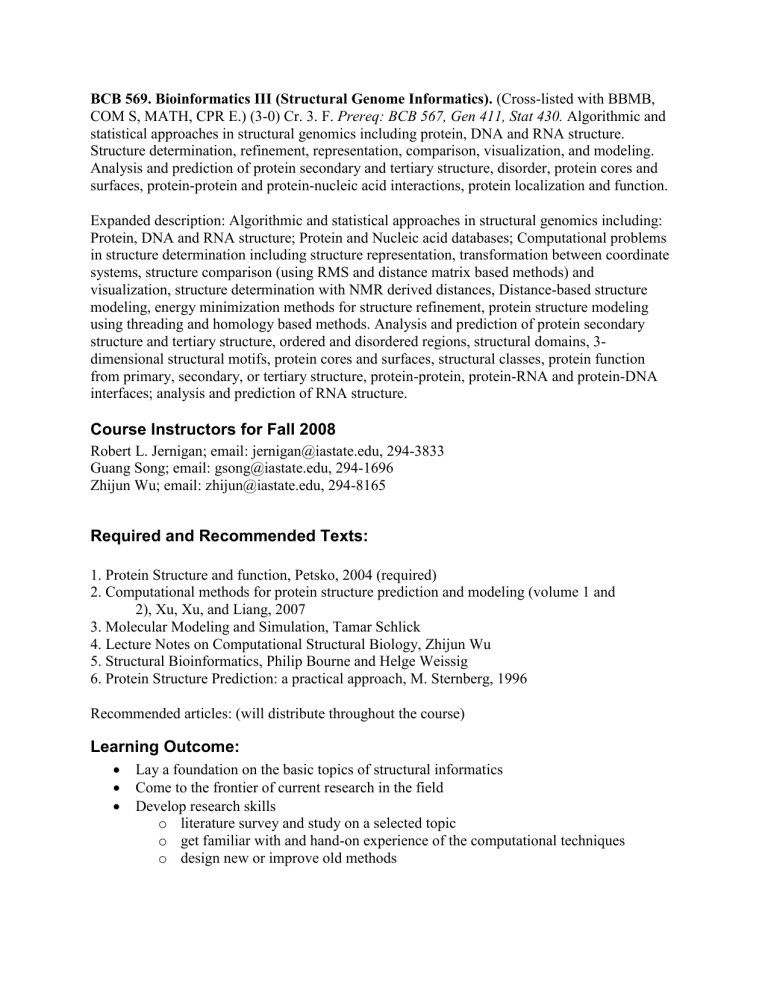
BCB 569. Bioinformatics III (Structural Genome Informatics).
(Cross-listed with BBMB,
COM S, MATH, CPR E.) (3-0) Cr. 3. F. Prereq: BCB 567, Gen 411, Stat 430.
Algorithmic and statistical approaches in structural genomics including protein, DNA and RNA structure.
Structure determination, refinement, representation, comparison, visualization, and modeling.
Analysis and prediction of protein secondary and tertiary structure, disorder, protein cores and surfaces, protein-protein and protein-nucleic acid interactions, protein localization and function.
Expanded description: Algorithmic and statistical approaches in structural genomics including:
Protein, DNA and RNA structure; Protein and Nucleic acid databases; Computational problems in structure determination including structure representation, transformation between coordinate systems, structure comparison (using RMS and distance matrix based methods) and visualization, structure determination with NMR derived distances, Distance-based structure modeling, energy minimization methods for structure refinement, protein structure modeling using threading and homology based methods. Analysis and prediction of protein secondary structure and tertiary structure, ordered and disordered regions, structural domains, 3dimensional structural motifs, protein cores and surfaces, structural classes, protein function from primary, secondary, or tertiary structure, protein-protein, protein-RNA and protein-DNA interfaces; analysis and prediction of RNA structure.
Course Instructors for Fall 2008
Robert L. Jernigan; email: jernigan@iastate.edu, 294-3833
Guang Song; email: gsong@iastate.edu, 294-1696
Zhijun Wu; email: zhijun@iastate.edu, 294-8165
Required and Recommended Texts:
1. Protein Structure and function, Petsko, 2004 (required)
2. Computational methods for protein structure prediction and modeling (volume 1 and
2), Xu, Xu, and Liang, 2007
3. Molecular Modeling and Simulation, Tamar Schlick
4. Lecture Notes on Computational Structural Biology, Zhijun Wu
5. Structural Bioinformatics, Philip Bourne and Helge Weissig
6. Protein Structure Prediction: a practical approach, M. Sternberg, 1996
Recommended articles: (will distribute throughout the course)
Learning Outcome:
Lay a foundation on the basic topics of structural informatics
Come to the frontier of current research in the field
Develop research skills o literature survey and study on a selected topic o get familiar with and hand-on experience of the computational techniques o design new or improve old methods
Course Requirements
Tentative topics and released dates: a) protein structure, PDB file, visualization, etc (GS, Sep 2 nd b) structure calculation (ZW, Sep 25)
) c) geometry calculation (RJ, Oct 14) d) molecular dynamics (ZW, Nov 22)
Final Project and Presentation
Possible areas: protein structure alignment protein geometry identification of domains modeling secondary structure prediction tertiary structure prediction (or one of its sub-areas) protein-protein interaction molecular dynamics statistical potential
(Students may choose a different area than listed here. Please talk to one of the instructors)
Project proposal should
A definition of the problem, why the problem is significant, the current state (what is known), description of the proposed approach, justification of the proposed approach, how the results are to be evaluated, expected finding of proposal work, significance of the results to be obtained
(where they can be used)
Project presentation (report) should contains a slide (section) that address each of the above issues.
List of topics:
0. Introduction to course (go over the syllabus; survey)
I. Basics (~2.5 weeks)
A.
Protein Structure basics (Book 1, Chapter 1)
B.
PDB format, Visualization (Book 2, chapter 18)
C.
Empirical Force fields (Book 2, chapter 2)
D.
Knowledge-based Energy functions (Book 2, chapter 3)
II. Structure Determination and Refinement (~3 weeks)
A.
X-ray Crystallography
B.
NMR (Nuclear Magnetic Resonance)
III. Structure Analysis (~2 weeks)
A.
Protein structure comparison (Book 2, chapter 5)
B.
Classification of Protein Folds (Book 2, chapter 5)
C.
Identification of domains (Book 2, chapter 4)
D.
Protein geometry (internal coordinates, solvent-accessible surface etc.) (Book 2, chapter
6)
IV. Structure Prediction (~2.5 weeks)
A.
Sequence Analysis
B.
Local Structure Prediction (Book 2, chapter 7)
C.
Homology Modeling (Book 2, chapter 10)
D.
Threading (Book 2, chapter 12)
E.
Ab initio protein structure prediction (Book 2, chapter 13)
V. Localization and Interactions (~1 weeks)
A.
Protein localization
B.
Protein-protein interactions (Book 2, chapter 15)
VI. Modeling and Simulations of Dynamics (~2 weeks)
(structure-dynamics-function relationship, functional mechanism)
A.
Molecular Dynamics
B.
Coarse-grained models (Elastic network model)
Academic Honesty
Each assignment is to be the product of your own intellectual efforts. Anyone caught cheating will receive an automatic F in the course.
Disability
If you have a documented disability and anticipate needing accommodations in this course, please meet with your instructor during the first week of class. Request that the Disabilities
Resources staff send a SAAR form verifying your disability and specifying the accommodations you will need.
BCB Program/Orientation/2011/BCB569-Description.doc
